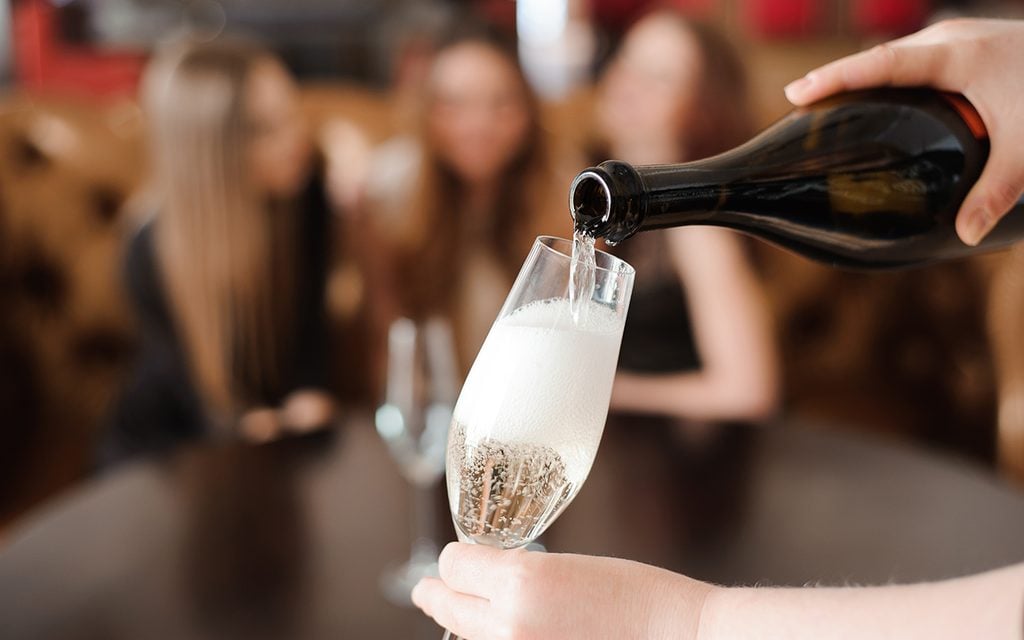How Long Does Champagne Last After Opening?
Updated: Dec. 05, 2023

How long does champagne last once it's opened? We'll show you the best ways to keep the bubbles in your bubbly.
Whether you’re celebrating a special occasion or simply enjoy the taste, there’s nothing as elegant as a perfectly chilled glass of champagne. This food-friendly wine is a delicious pairing with countless dishes and can also be used to create fabulous champagne cocktails, but if you don’t have plans to drain the bottle, there are a few things you need to know. You never have to let your champagne go to waste again.
How Long Does Champagne Last?
Once you open the bottle flawlessly, your champagne has a shelf life of about 3 to 5 days. After this point, it’ll go flat, and its lovely flavors will have evaporated. Certain sparkling wines like Prosecco and moscato don’t last as long as traditional method sparkling wines (i.e. champagne, cava and so on). Aim to drink your Prosecco ASAP—definitely no more than 3 days after first popping the cork.
Curious about how long a bottle of unopened champagne lasts? If you store your unopened champagne properly, you can expect it to keep anywhere from 3 to 7 years, depending on the style. Vintage bubbly tends to be longer-lived than non-vintage. Some truly exceptional bottles can continue to improve for over a decade, although they may lose a little of their sparkle.
Editor’s Tip: Don’t store your champagne in the fridge. Let it live in a cool, dark place until you’re ready to enjoy it. When it’s time to drink, stow the bottle in the fridge for about 30 to 45 minutes or put it in an ice bucket with a 50/50 mix of ice and cold water.
How to Keep the Fizz in Champagne
The trick to keeping opened champagne fresh is to pop a champagne stopper in it. Champagne stoppers are airtight. This prevents the gas from escaping the wine. If you know you won’t be finishing the bottle or simply want to keep it as fresh as possible in between refilling your glass (here’s why you shouldn’t drink champagne out of a flute), clamp that stopper onto the bottle once you’re done pouring.
If you don’t have a champagne stopper on hand, you’re better off stuffing a regular wine cork into your champagne bottle to keep the fizz in and the oxygen out. While some folks swear by it, the old spoon-in-the-bottle trick does not work. If all else fails, wrap the top of the bottle with a bit of cling wrap and secure it with a rubber band.
This last tidbit is essential: No matter what you do, stick your bubbly back in the fridge (not the freezer) to help keep it fresh. The colder the champagne, the slower it releases CO2, which helps keep the bubbles right where you want them—in your wine.
Does Champagne Ever Go Bad?
Alas, yes. Champagne does spoil. How will you know if your champagne is bad? It will be flat and the fine fruit aromas will have faded, replaced by the smell of vinegar. It will taste sour and altogether unpleasant. The only thing bad champagne is good for is pouring down the drain—you wouldn’t even want to cook with it by this point.
The best way to avoid wasting champagne is simple—save it for those moments when you have help finishing a bottle. If you like a cheeky glass or two during the week, switch to half bottles and invest in a champagne stopper.
Feeling a little thirsty? These are our top picks for the best cheap champagne under $20.
